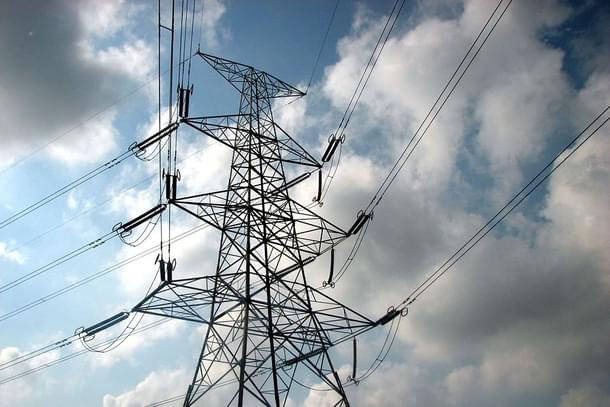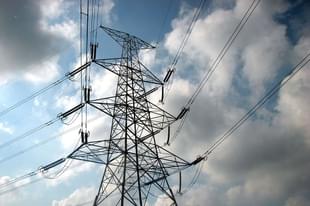News Brief
Explained: Woes Of Indian Power Sector As Employees Decide To Strike On 10 August Against Electricity Amendment Bill
Swarajya Staff
Jul 15, 2021, 12:34 PM | Updated 12:34 PM IST
Save & read from anywhere!
Bookmark stories for easy access on any device or the Swarajya app.


Power engineers and employees will boycott work for a day on 10 August to protest against the proposed Electricity (Amendment) Bill 2021, All India Power Engineers Federation (AIPEF) said in a statement.
The organisation said that in finalising the draft Bill, major stakeholders — consumers, power sector employees and engineers — are being ignored and the Centre has not made any effort to discuss the issues with them.
It alleged that while the 2003 Act allowed privatisation of generation, the proposed Bill is privatising power distribution which will drive state discoms to bankruptcy.
The move to de-license power distribution is no way to ensure efficient and cost-effective electricity supply to the citizens, AIPEF said, adding that unless the reform is designed taking into account ground realities, the well-intended objective of 'choice to consumers' may not be fulfilled.
The Issues Of Power Sector
The power sector can be segmented into three parts — generation, transmission, and distribution. The electricity is produced through various sources of energy (thermal, hydro, nuclear, solar etc.)
Next, a transmission grid carries high voltage power from the generation plants to the distribution sub-stations. From the sub-stations, this electricity is transmitted to individual consumers through a distribution network. These are operated by power distribution companies (discoms), which are mostly state-owned.
The financial health of discoms is a major concern. They have high level of debt and have been running losses for the past several years. Currently, the state-owned discoms reportedly make a loss of Rs 0.41 for every unit of power supplied. The overdue payment to generation companies has also increased from Rs 57,352 crore in March 2019 to Rs 94,598 in March 2020.
In an episode of the Bharatvaarta podcast series, Mudit Jain (Head of Research, Tata Cleantech), explains that while generation and transmission are also not free of faults, the major bottleneck comes in the distribution segment, which is where the all the monetisation of power plants finally happens. He says that discoms transfer stress to both the generation and transmission companies.
The major reasons for poor financial health of discoms include:
Underpricing of tariff
high technical and commercial losses (including theft and billing issues, both collection and billing efficiency are poor)
As of now, the government transfers subsidy to power discoms to keep the electricity tariffs low for the final consumer; delay in this transfer affects the liquidity available to discoms
The government made adoption of reforms a precondition for the benefits of several schemes. The UDAY program achieved AT&C loss reduction from 27 per cent in 2016 to 19 per cent now though not meeting the 15 per cent target. UDAY helped reduce interest outgo for states.
The reforms regarding smart metering are currently being led by UP and Bihar. Smart meters will partially address some of the distribution issues and should be expanded nation wide.
Jain points out that the schemes improved the situation but could not work to the point where the distribution sector could become sustainable. He says that the basic reason is that the revenue generated by the discoms is not reflective of the costs.
He further points out that lack of political will plays a major role in poor collection and billing efficiencies as discoms need state machinery and law and order support for increasing the collection efficiency. He says that we see a pattern of passing the buck with regards to the discom financial stress problem.
What Does Electricity (Amendment) Bill 2021 Propose?
Electricity is a subject in the concurrent list of the Constitution. Currently, Electricity Act, 2003 is the central law regulating the electricity sector. It provides for electricity regulatory commissions at both the central and state levels (CERC and SERCs). These commissions regulate and determine tariff; issue licenses for transmission, distribution, and electricity trading; and adjudicate upon disputes, within their respective jurisdiction.
As per the Ministry of Power, the Electricity (Amendment) Bill 2021 seeks to address critical issues which have weakened commercial and investment activities in the electricity sector.
The major proposed changes brought by the bill are:
—A separate Electricity Contract Enforcement Authority (ECEA) which would adjudicate on issues relating to contracts between a generation company and other licensees; while matters related to tariff continue to be adjudicated by concerned SERCs and CERC.
—A common selection committee to recommend appointments to all SERCs, CERC, Appellate Tribunal for Electricity (APTEL), and ECEA.
—While the 2003 Act provides that the tariff for the retail sale of electricity should progressively reflect the cost of supply, the Bill states that tariff must reflect the cost of supply.
—State governments must determine tariff for the retail sale of electricity without accounting for the government subsidy, and subsidy must be provided directly to consumers.
—Cross-subsidy should be reduced in the manner provided in the National Electricity Tariff Policy prescribed by the central government. Initially, the bill proposed a flat tariff for all and the state governments paying direct subsidy to the target groups like farmers. This provision faced opposition from the states, and the government has now decided to change it to restricting cross-subsidy to 20 per cent.
—Supply agreement between a generator and a distribution licensee may require adequate payment security, and if adequate payment security is not been provided by the distribution licensee, the load dispatch companies are prohibited from dispatching electricity.
—The bill empowers the central government to formulate a National Renewable Energy Policy in consultation with state governments. The central government can also prescribe a minimum percentage of purchase of electricity from renewable and hydro sources of energy. The SERCs will specify RPO as may be prescribed by the central government and the licensees can be penalised for non-compliance.
Assessment of The Bill
Jain says that one good thing about the bill is that the tariff adoption will be within 60 days.
Another laudable aspect is with regards to the renewable energy. Currently, states have the freedom to specify their own RPOs, this will now become centre's responsibility.
Jain also praises the step to make it a responsibility of the state load dispatch centres (SLDs), instead of the generators, to stop the transmission if the contract requirements are not met. He says that it is very hard for the generators to stop the transmission as they are a part of the business ecosystem which they are supposed to keep running.
The contract enforcement authority is also a step in the right direction, as a lot of stress can be attributed to governments reneging on the contracts. Jain gave the example of Andhra Pradesh government deciding to renegotiate on PPAs for solar energy, and the matter being caught up in the slow-moving judicial system. Under the bill, all such disputes have to settled by the ECEA within a span of 120 days.
"The most important reform here is with respect to the subsidy transfer," says Jain. He lauds the step to transfer subsidies directly to consumers, instead of the discoms. He points out its various benefits:
One, discoms will not have to continue to make losses as the state governments will transfer the subsidy at the start of each year to respective accounts (electricity accounts not bank accounts) and discoms will not have to wait for the subsidies that usually come at the end of the year
Two, discoms will not have to keep increasing the tariff for CNI consumers for cross subsidisation;
Three, it will open up the open access sector which is marred by various regulatory issues, and allow the discoms to appoint sub licensees to cover new areas.
Jain also lauds the statement made by the power minister that a clause will be included in the bill that SERCs can be automatically removed if they do not uphold the law and pass regulations accordingly. He says that SERCs are today performing as an extended arm of the government rather than as a quasi-judicial body.
Rajat Seksaria (CEO - Acme Solar) says that the bill is about ensuring discipline at the level of the state, and therefore, there will always be questions raised about encroachment into state's domain. He says that enforcing discipline on the state governments is necessary as discoms are controlled by them and are a major pain point for the whole power sector.
However, the state government, particularly led by the opposition parties have opposed the bill.
Seksaria says that steps taken by one state can decide the sentiment of the developers across the country. He also lauds the step for a unified selection committee to reduce the politicisation of the appointment process of the members of the regulatory commissions.
The union government had in May 2020 announced its plan to privatise the discoms in Union Territories (UTs), and Chandigarh was the first UT to issue notice inviting bids for the same.
Jain says that the step was meant to ensure higher billing and collection efficiencies. However, he says, that the example of Chandigarh is in front of us where the High Court has stayed the tender process. Seksaria says that the court intervention in an early stage can be seen in a positive light as the law can quickly pass through India's check and balance system with which it inevitably has to deal with.





